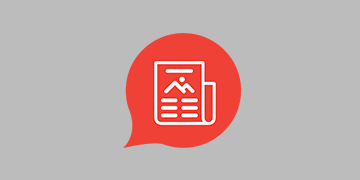Photoshop—the Designer's Tool of Choice
No online toolbox is complete without Photoshop, a power tool I use every day. Two weeks ago, I attended a Photoshop cram session taught by the Bob Vila of Photoshop, Bert Monroy.
Bert Monroy is an amazing photorealistic painter and Photoshop serves as his canvas, his brushes, and his paint. I consider myself somewhat advanced in the world of Photoshop, but a day with this guy showed me that what I know is just a fraction of what this program can do.
When I say I use this tool every day, I mean every day. All of our creative endeavors here at Digett, at one time or another, find their way into Photoshop—site designs, logos, product shots, advertisements, staff photos, office wall art, newsletter imagery, Christmas cards, wine labels, and so on.
Most of my time in Photoshop is spent designing websites, as you might expect. It is undoubtedly the most exciting part of the process. Don't listen to anyone who says differently, especially programmers and information architects. Site design is what the people want and Photoshop is a very efficient way to give the people what they want. Here are a few reasons why I think Photoshop is the most powerful of web design power tools:
The usefulness of layers
Layers are the single most important and useful element to any design comp. Proper use of layers can result in a very efficient design phase. Isolating each design element on its own layer makes it very easy to make specific changes later on, especially after a client has reviewed the designs and provided feedback.
In addition, layers are a quick way to show the client multiple variations of the same design. For example, swapping out a few layers can change the color scheme of the entire page, thus giving the design a completely different look and feel. This would be a quick way to find a color scheme that the client is most happy with.
A dynamic type tool
The type tool works with an array of typefaces, from the handful of web-safe fonts to the thousands of obscure fonts available online for download. Among the more obvious edits are size, color, and style. But beyond the basics, there are a lot of cool effects you can apply to type. Layer styles, for example, can spice up any font with drop shadows, glows, bevels, pattern overlays, and gradients, just to name a few. The type tool is a power tool, in and of itself.
The ease of working with imagery
Photography is a big part of most websites, and working with photos in Photoshop is, as the name implies, very easy. Converting an image to black and white is just a few clicks away, as is sharpening and applying filters. Any one of these effects can enhance a design in a matter of seconds.
Photoshop's compatibility
Photoshop can open just about any file type, so handling client assets is never a problem. JPEG, TIFF, PDF, PNG, GIF, and EPS files are a few common file types that Photoshop can work with, and the list goes on. Conversely, the program can save the document as any one of these same file types, making file conversion and sharing a painless process.
I've touched on just a few aspects of Photoshop that make it a power tool in web design. Like I said, what I know is just a fraction of what this program can do, and I'm learning new things every day. I encourage you to do the same.
MONTHLY MARKETING INSIGHTS.
Get thought-provoking and actionable insights to improve how your firm makes a connection with your customers.





LEAVE A COMMENT